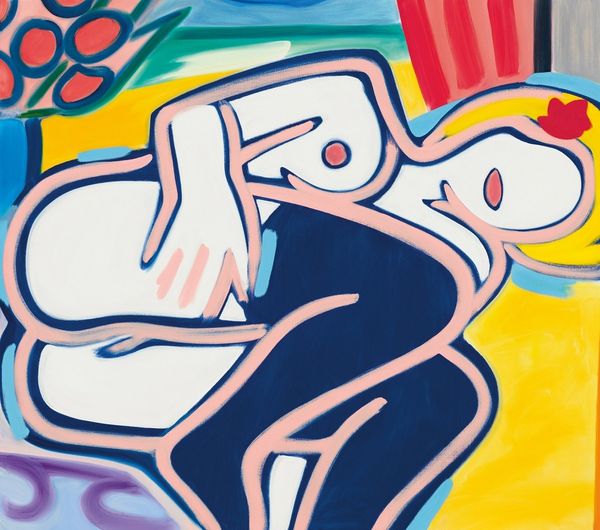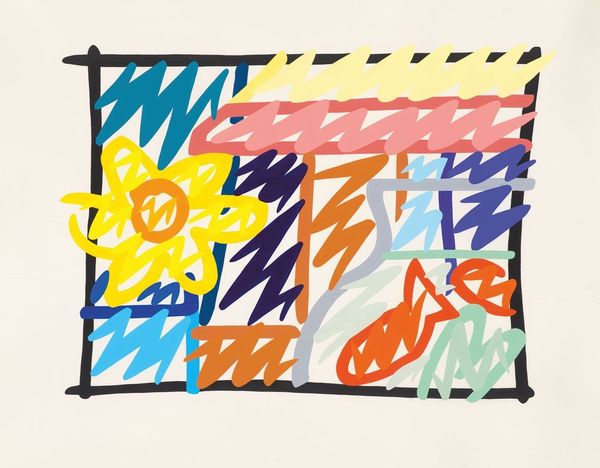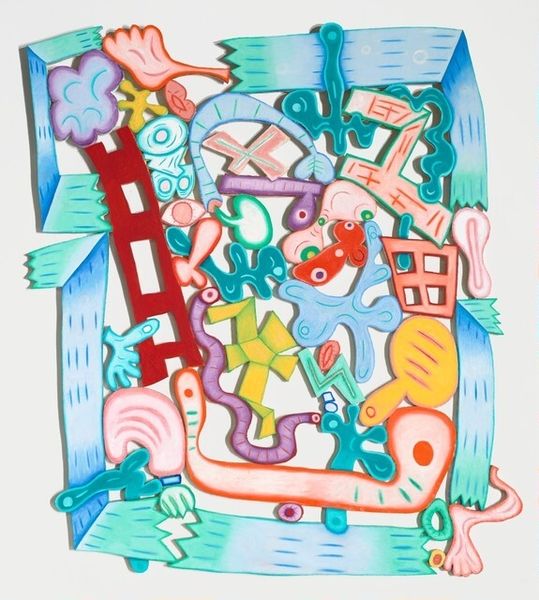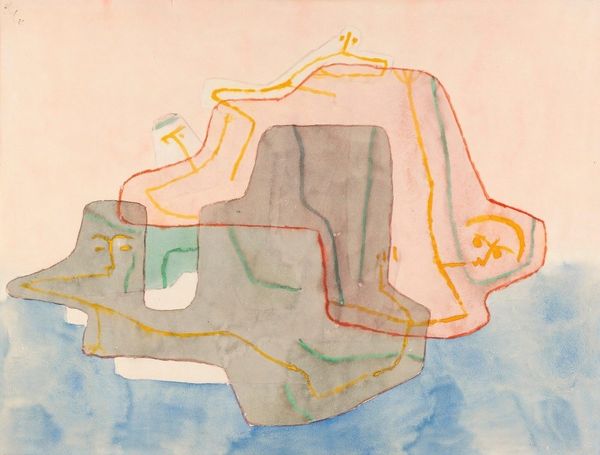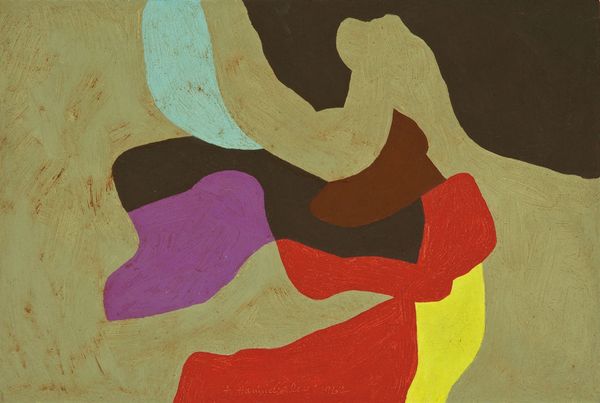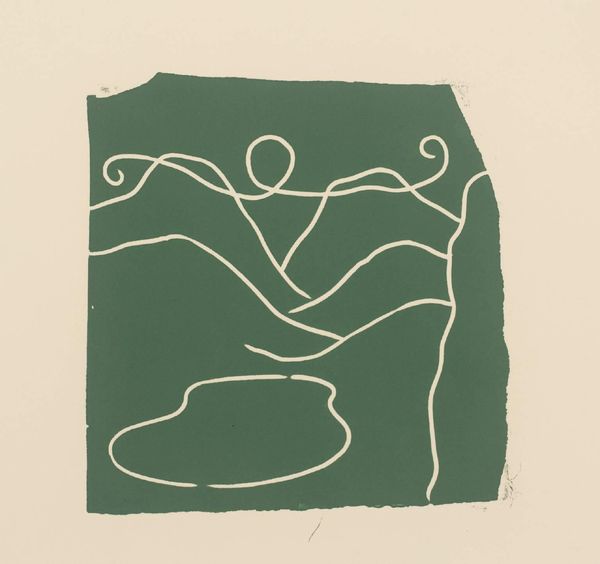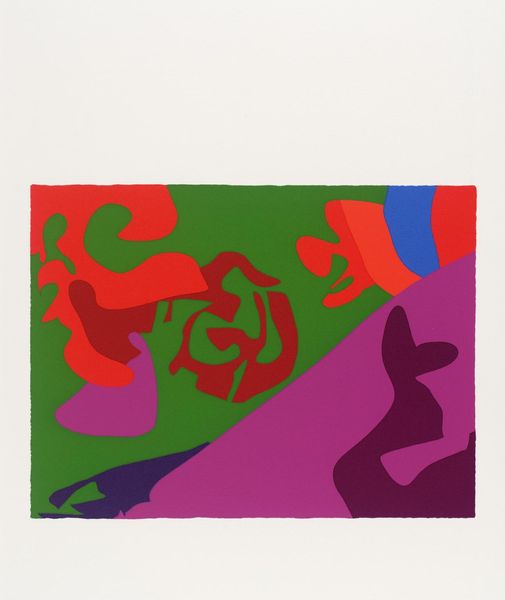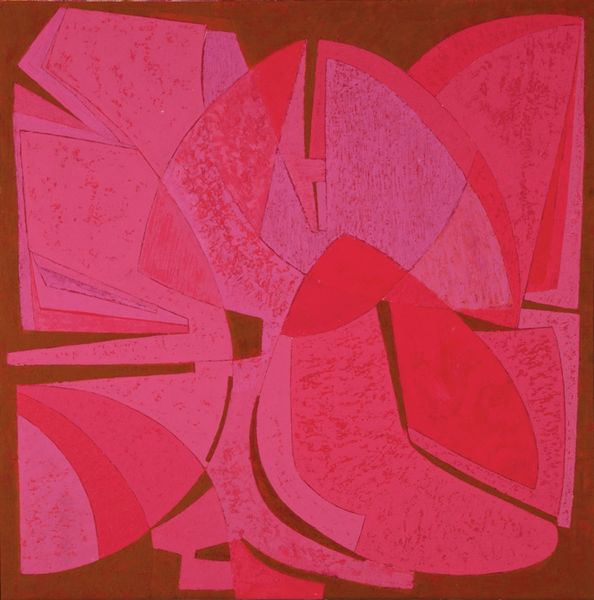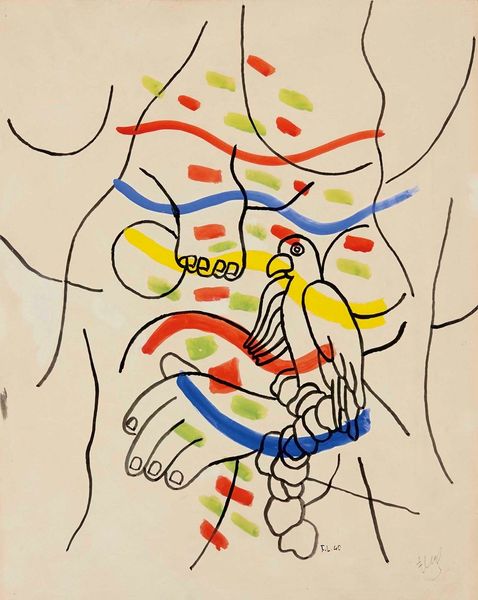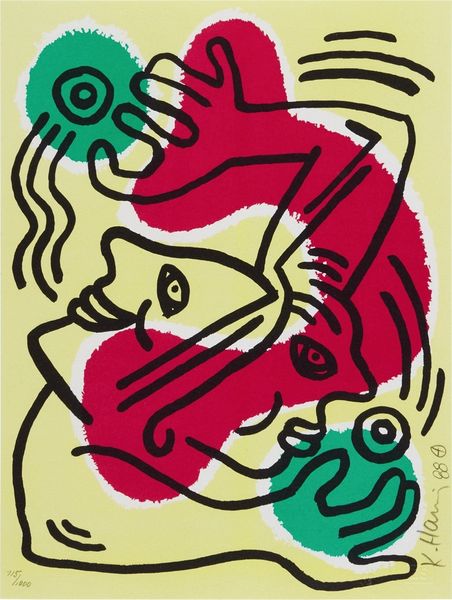
Copyright: Modern Artists: Artvee
Curator: Welcome. Here we have Tom Wesselmann's "Bedroom Brunette Doodle" created in 1984. The medium is acrylic paint on canvas, a classic choice for his bold pop art aesthetic. Editor: It's immediately striking. There is something simultaneously playful and disconcerting about the flatness and disjointedness of the forms, particularly given that the subject appears to be a reclining nude. The title itself seems to undermine its subject through self-deprecation. Curator: Indeed. Wesselmann was always concerned with the interplay of line and form, often reducing figures and objects to their most essential shapes. We can look at the economy of line to convey form: notice the use of the curving red and black lines depicting the hair in stark contrast with the pink lines of the body. What do you observe about Wesselmann's selection of color here? Editor: I think it’s interesting that the flesh tones are rendered in a very pale, almost sickly, pink. Paired with the deliberately garish reds, greens and blacks it lends the work an unexpected anxiety. It certainly resists the male gaze of traditional nudes, instead highlighting the artifice inherent to such representations of women. Is he intentionally disorienting the viewer through the formal elements of color and line? Curator: I agree; Wesselmann expertly controls color. Consider the placement of the cool blues offset by the warmer tones. We see these bright flat colors and outlines creating dynamic tension within the frame. By reducing the figure to such basic shapes, it detaches the subject from the personal, moving towards a generalized image, an every-woman perhaps? Editor: Maybe. Yet, by depersonalizing the figure in such a direct way, it can easily lead to the erasure of specificity and the very real lived experiences of women. It feels symptomatic of a particular strain of male modernism—cool, detached, impersonal and rather bloodless despite the fleshy subject matter. How much is the reduction and dismemberment of women's bodies still happening within popular culture? Curator: It’s a debate worth having. However, Wesselmann consistently used simplified, generic imagery as a way to talk about the superficiality of modern life. Ultimately, this artwork pushes the boundaries of representation while provoking a lot of challenging questions for today’s viewer. Editor: Indeed, the questions surrounding this artwork really highlight the challenges of looking at historical images through a contemporary lens, acknowledging both its technical qualities, while contextualizing its possible repercussions.
Comments
No comments
Be the first to comment and join the conversation on the ultimate creative platform.

